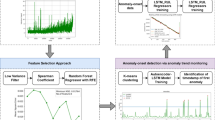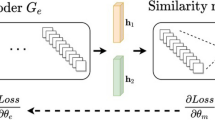Abstract
When a transformer is running, the insulation oil gradually becomes degraded due to various factors such as electricity and heat, during which low molecular weight gases are formed upon decomposition. By analyzing the gas content in the oil, the state of the insulation oil can be identified, thereby providing an effective basis for transformer fault analysis and diagnosis. However, when the types and severity of the internal faults inside the transformer are different, the components and contents of the gases dissolved in the oil also differ. Sometimes when the types of faults are the same, the gas content may be different. Therefore, if the characteristic of the specific gas content corresponding to a type of fault can be obtained, the transformer faults can be accurately identified according to the contents of different gases, which can most efficiently ensure the reliable operation and maintenance of power transformers. In this paper, an identification method based on the deep transfer network was proposed. According to this method, by studying the existing gas contents and states based on a large number of training data to discover their characteristics, the states of gases in the oil can be precisely identified. Experiments have proved the effectiveness of this method. The ability of state identification by this method is far superior to that of the other existing methods.




Similar content being viewed by others
References
International Electrotechnical Commission, Interpretation of the analysis of gases in transformers and other oil-filled electrical equipment in service. Publication 599, 21–25 (1978)
R.R. Rogers, IEEE and IEC codes to interpret incipient faults in transformers using gas in oil analysis. IEEE Trans. Electr. Insul. 13(5), 349–353 (2007)
N.M. Nawi, A. Khan, M.Z. Rehman, A new back-propagation neural network optimized with cuckoo search algorithm. International Conference on Computational Science & Its Applications-volume. Springer, Berlin (2013)
A. Mathur, G.M. Foody, Multiclass and binary SVM classification: implications for training and classification users. IEEE Geosci. Remote Sens. Lett. 5(2), 241–245 (2008)
X.L. Tan, C. Shu, Y.F. Peng, The application of support vector machine in transformer fault diagnosis. Adv. Mater. Res. 926–930, 3410–3413 (2014)
S.F. Lan, S. Liu, Review of research on cuckoo search algorithm. Comput. Eng. Des. 36(4), 1063–1067 (2015)
J.L. Yu, S. Bian, Diagnosis model of transformer failures based on BP neural network. J. Syst. Simul. 26(6), 1343–1349 (2014)
C. Jiatang, A. Li, X. Yan, Transformer fault diagnosis based on multi-algorithm fusion. Recent Adv. Electr. Electron. Eng. 9(3), 249–254 (2016)
S.J. Pan, Q. Yang, A survey on transfer learning. Knowl. Data Eng. 22(10), 1345–1359 (2010)
G. Matasci, M. Volpi, M. Kanevski, Semisupervised transfer component analysis for domain adaptation in remote sensing image classification. IEEE Trans. Geosci. Remote Sens. 53(7), 3550–3564 (2015)
H. Sun, S. Liu, S. Zhou, Transfer sparse subspace analysis for unsupervised cross-view scene model adaptation. IEEE J. Sel. Top. Appl. Earth Obs. Remote Sens. 9(7), 2901–2909 (2016)
H.L. Yang, M.M. Crawford, Spectral and spatial proximity-based manifold alignment for multitemporal hyperspectral image classification. IEEE Trans. Geosci. Remote Sens. 54(1), 51–64 (2015)
Y. Lecun, Y. Bengio, G. Hinton, Deep learning. Nature 521(7553), 436–444 (2015)
Author information
Authors and Affiliations
Corresponding author
Additional information
Publisher's Note
Springer Nature remains neutral with regard to jurisdictional claims in published maps and institutional affiliations.
Rights and permissions
About this article
Cite this article
Zhai, S., Chen, X., Wei, L. et al. Research on identification methods of gas content in transformer insulation oil based on deep transfer network. J Mater Sci: Mater Electron 31, 15764–15772 (2020). https://doi.org/10.1007/s10854-020-04138-4
Received:
Accepted:
Published:
Issue Date:
DOI: https://doi.org/10.1007/s10854-020-04138-4




